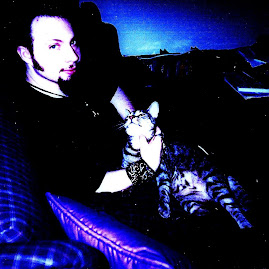Tinto Brass is widely known for his erotic films exhibiting a keen eye for the female derriere. He's also known as the director of the notorious Caligula. But early in his career, he made a trio of works that embodied an anarchic counter-culture aesthetic. Some might say these films are dated relics of the 60s that don't hold up today. While these films are firmly lodged in the trappings of that era, many of their techniques - rapid-fire editing, aggressive montage, the music video, comic book influences, extreme imagery - were well ahead of their time, even if they had all already been pioneered by the likes of Anger, Bava, Questi, Arrabal, Kren, and Jodorowsky.
These films were something of a revelation to me. The Howl (aka L'Urlo) was the first Brass film I acquired, some time back, but I rewatched it recently upon receiving the other two entries in this psychedelic trilogy: Deadly Sweet (aka Col Cuore in Gola or I Am What I Am) and Attraction aka Nerosubianco (also retitled The Artful Penetration of Barbara by the film's American distributor, master erotic filmmaker Radley Metzger). Whereas the Howl is an all-out assault on society, war, and sexual mores, and is totally bold and transgressive, Deadly Sweet sublimates the more extreme of Brass' sensibilities, making it the most subversive of the three. If The Howl defies all labels and Attraction appropriates the tropes of the kind of erotic film Metzger himself might make (were he dosed on LSD), Deadly Sweet roughly fits the conventions of the giallo, all the way down to the casting of the two stars of another subversive giallo, Death Laid An Egg - Jean-Louis Trintignant and Ewa Aulin. Despite its easy classification genre-wise, Deadly Sweet is still rather experimental in its construction, especially in the editing, which many time emulates comic book sound effects. Deadly Sweet's a worthy twist on the giallo, and a unique sort of psychedelic thriller. I'd recommend adventurous viewers give it a chance.
Adventurous viewers may be the only ones to give The Howl a go, and that's fine. It's definitely for those who crave an all-out barrage on the senses. It has a very Panic Theatre vibe to it - evocative of the circle of artists that included Jodorowsky, Moctezuma, Arrabal, and Topor. However, of Brass' "lost trilogy", the film that is growing to be my favourite is Attraction. Featuring the stunning Anita Sanders as Barbara, the film follows Barbara as she journeys through the counter-culture, unshackling herself from a repressive marriage. Her voyage is marked by two crucial ingredients: the rock band Freedom (an offshoot of Procol Harum), who serve as a running Greek chorus to Barbara's encounters; and a mysterious black man who seems to beckon Barbara to an erotic encounter. This man is played by Terry Carter, who went on to portray Col. Tigh in the original Battlestar Galactica television series.
The music is quite striking, and with the film's daring editing, it at times resembles a primeval music video. Indeed, the editing is one of the film's most amazing attributes, as in The Howl. The quick, hypnotic cuts remind me of Giulio Questi's opening to Django Kill, or of Kurt Kren's aktionist classic Mama und Papa. In Attraction, however, the editing, as the music, serves well the admittedly thin story, propelling Barbara towards a - you guessed it - sexual awakening. Sanders and Carter are both wonderful, wringing the most from their almost archetypal characters. Their minimalist acting works as a great counterpoint to Brass' often crazed montage. So with the two leads, the band, and Brass' psychedelic imagery, Attraction is a resounding success of mood and technique. If you catch only one in this tripped-out trilogy of films, I recommend Attraction aka Nerosubianco - an artful penetration indeed.














.jpg)












No comments:
Post a Comment